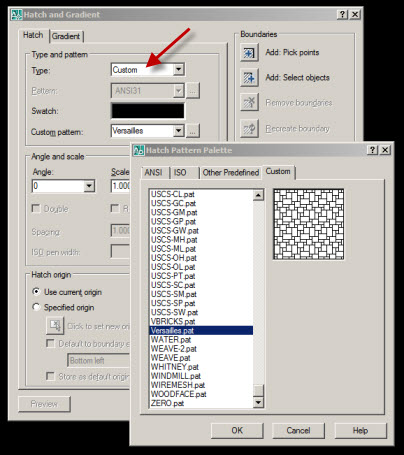Stone Veneer Hatch Patterns Autocad Commands

© Copyright 1997-2017 Coronado Stone Products® - View All photographs and text contained in this web site are protected by the copyright laws of the United States and most foreign countries. Any unauthorized use or reproduction is strictly prohibited and will subject the infringer to civil and criminal liability and penalties under the copyright laws.

Incarcat de Accesari 1109 Data 30.10.10 Marime 5.1 MB Browserul tau nu suporta HTML5. May 13, 2014. Solved: How do I add new hatch patterns into AutoCAD LT 2014? You then find all of these new hatch patterns that you added under the CUSTOM option in HATCH command pop-up (or in the Ribbon). The patterns were downloaded from a stone veneer manufacturer's website, any suggestions?
Due to photographic and monitor variations, web site colors may not be accurate. We suggest examination of Coronado product samples prior to purchase. All sizes listed on the web site are nominal. Installing the hatch patterns For AutoCAD 2009, 2008, 2007, 2006, 2005, 2004 LT 2009, 2008, 2007, 2006, 2005, 2004 In brief: Copy and paste the entire contents of my file hatch_pattern_code.txt into your acad. Schecter Guitar Serial Number. pat hatch file and your acadiso.pat hatch file (aclt.pat and acltiso.pat hatch files for LT). Make sure there is a carriage return at the end of the last line. You will then see the new hatch patterns alongside the standard AutoCAD patterns in the 'Other Predefined' tab when using the BHATCH command.
In more detail: You need to locate your existing two standard AutoCAD (or LT) hatch files, open them in a text editor, then copy the hatch pattern code from my file (hatch_pattern_code.txt) into them. The standard AutoCAD hatch files are acad.pat and acadiso.pat (aclt.pat and acltiso.pat for LT). Acad.pat contains the hatch patterns used in imperial drawings, and acadiso.pat contains the hatch patterns used in metric drawings. Torrent Monkeys Go Home 1967 Firebird. The patterns in both files are the same except for the dimensions used. Hatch pattern files (.pat) are just ordinary text files consisting mainly of numbers, which is the code AutoCAD uses to draw the hatches.
Typically you will find the hatch files in this directory (folder): c: Documents and Settings (your username) Application Data Autodesk (AutoCAD or LT version) enu support The 'Application Data' directory is a hidden one, and might not be visible on your system. To make it visible, go into Windows Explorer (for Windows XP: start >All Programs >Accessories >Windows Explorer) then browse to the c: Documents and Settings (your username) directory. Click on: Tools >Folder Options. Then click on the 'View' tab. Under 'Advanced Settings: Hidden files and folders' select 'Show hidden files and folders' then hit 'OK'. This will make the 'Application Data' directory visible, and allow you to locate the.pat hatch pattern files. (The above example shows the drive letter 'c: '.
This might be different on your system, but the directory structure will be the same.) If the hatch files are not in this directory (by default they will be) then you will need to search for them. Search for them in Windows Explorer by hitting the 'Search' button, selecting 'All files and folders', then entering *.pat in the file name search box. Select 'My Computer' from the 'Look in:' list. Then hit 'Search'. This will give you the locations of your hatch files. You might have more than one acad.pat file (or more than one acadiso.pat, aclt.pat, acltiso.pat file). In which case you should use the one that is highest in the 'Support File Search Path' list, or use any one and move the directory that it is in to the top of the 'Support File Search Path' list (see below).